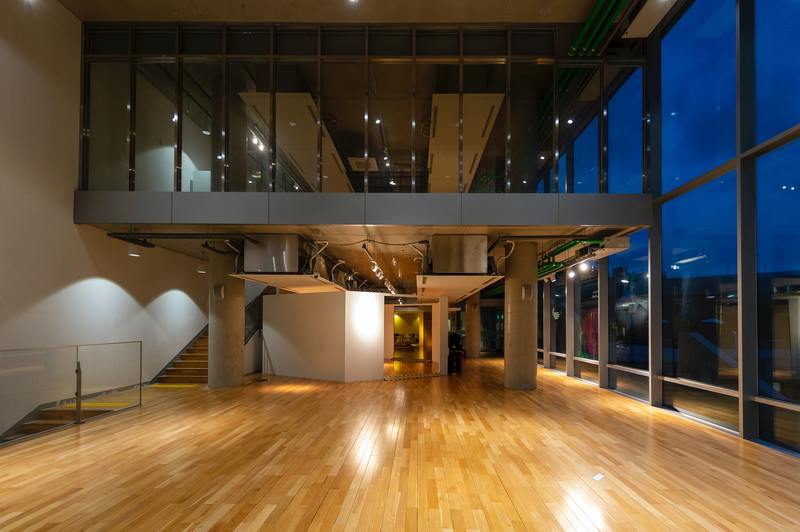If you’re wondering about the steps on how to remove mold from wood floors, this article will be of help. The first step is to protect yourself from mold exposure. We will discuss the other steps in the latter part of the article, so read until the end!

Mold On Wooden Floors
The floors of your house contribute to the house value. Maintaining it in good condition would bode well for you if you have plans on moving.
Even if you don’t plan on moving, well-maintained floors contribute to your home’s atmosphere. If it is damaged or moldy, it may look filthy and unwelcoming.
How does mold grow on wood floors?
Mold spores are everywhere. They just need to find an appropriate space with enough moisture to grow. Here’s an article about the ways to eradicate mold spores to prevent mold growth in your home.
Mold grows on wood floors due to excess moisture. The leading cause of this is water damage. There are several ways for your flooring to get water-damaged.
One cause is roof leaks. Roof leaks can ruin the ceiling and the floors, so it’s wise to check it for damage regularly.
Plumbing leaks beneath the wooden floors are another cause of water damage. Plumbing leaks are harder to detect compared to roof leaks. Hence, if you already have mold growth, it’s time to call in a mold and water damage expert.
Leaks aren’t the only forms of water damage. Floor deterioration due to high levels of humidity can also be a form of water damage. When the floor absorbs water from leaks or humidity, it becomes a perfect environment for mold to grow.
What are the signs of mold on wooden floors?
Visually, a sign of mold growth may be discoloration or a stain on your floor’s surface. It may also be identified as a fuzzy growth.
Color is another way of detecting mold. Here’s an article to guide you in identifying black mold on your floor.
Another thing you will notice if you have a moldy wood floor is the smell it exudes. The scent is a musty and pungent odor.
Apart from the smell, mold may result in wood rot. Wood rot is when your floor becomes crumbly or when they break down when poked.
What are the dangers of mold exposure from moldy wooden floors?
The other sign of mold growth on your floor is the health reactions of your family members to it. Mold can be hazardous, especially among infants and children.
Having them play on your floor while it’s mold-ridden may lead to health complications. Other demographics susceptible to mold are the elderly, pregnant women, and immunocompromised people.
The health reactions to mold range from mild skin allergies to difficulty breathing and nausea. It’s challenging to deal with mold and its adverse effects, so it’s best to remove them as soon as possible.
Removing Mold From Wood Floors
Assess the cause of mold, whether it’s due to leaks or level of moisture. Fix the root of the mold problem. Then, proceed with the mold removal process.
Step #1. Put on protective gear against mold
You will need protective hand gloves, a dust mask, water, a spray bottle, distilled white vinegar, paper towels, and a vacuum for this project.
Step #2. Ventilate
Drive the excess moisture away from the room by opening your windows. Ventilating the space would also lessen your mold exposure.
Step #3. Diluted vinegar solution
The solution you will use for mold removal is a diluted vinegar solution. Vinegar works as an anti-fungal and deodorant solution to mold.
To make the solution, get your spray bottle. Then, mix a quarter-cup of distilled white vinegar and a cup of water in it. After that, spray the mixture on the moldy area and cover the spots with paper towels.
Step #4. Clean
Wipe the mold with the paper towel, then dispose of the towels. For stubborn mold stains, scrub them off with a sponge. Clear the vinegar solution using a damp towel and dry the area.
Step #5. Vacuum
After getting rid of mold on your wooden floor’s surface, vacuum the entire area. Vacuuming is necessary to remove the spores on the affected spots altogether. After vacuuming the room, proceed on working towards mold prevention.
Ways to prevent mold from growing on floors
Here are some tips on mold prevention. The first is to ventilate your rooms to prevent trapped moisture, which leads to mold growth.
Another tip is to regularly check your roof for leaks or your plumbing system for any issues. Water damage is a serious homeowner concern, and the reparation costs of it can be high.
Lastly, clean the spills as soon as they happen. Spills are inevitable in a household, but they shouldn’t lead to mold growth.
Conclusion
It’s comforting to know how to remove mold from wood floors or to see any removal process, for that matter. Mold is a severe issue to some homeowners, and prevention sometimes isn’t enough. We hope this article about mold removal will be of help to you!
